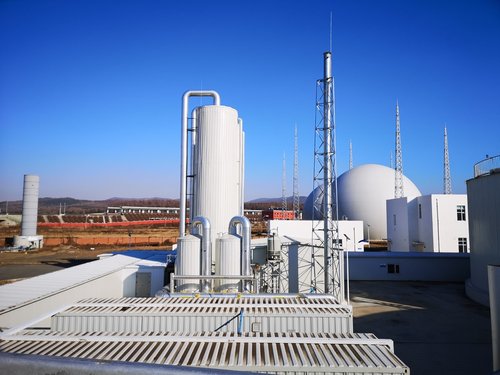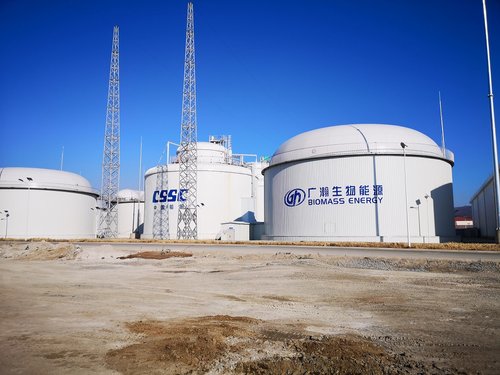The experience we invite you to explore demonstrates the significant progress made by HoSt, VERBIO, C.F. Nielsen, and BioFuel Technology in the field of biomethane over the past 15 years in countries such as Denmark, Germany, the Netherlands, the United States, and, in recent years, France and China.
As part of the project “Ukrainian Biomethane Sector Development” UABIO experts have prepared an important Analytical Note No. 2: Advanced biomethane production from ligno-cellulose materials, which covers all the necessary information on the production of advanced biomethane from ligno-cellulose materials. We would now like to focus on the actual experience and case studies selected by our experts for this document. Four advanced enterprises that demonstrate the achievements of the biomethane industry. So, let’s take a closer look at them.
VERBIO Schwedt biomethane facility, Germany
Verbio’s biomethane facility was introduced in 2010 as the world’s first large-scale innovative plant for mono-straw fermentation. It is based on the bioethanol refinery in Schwedt (Brandenburg). First stage was commissioned in 2014.
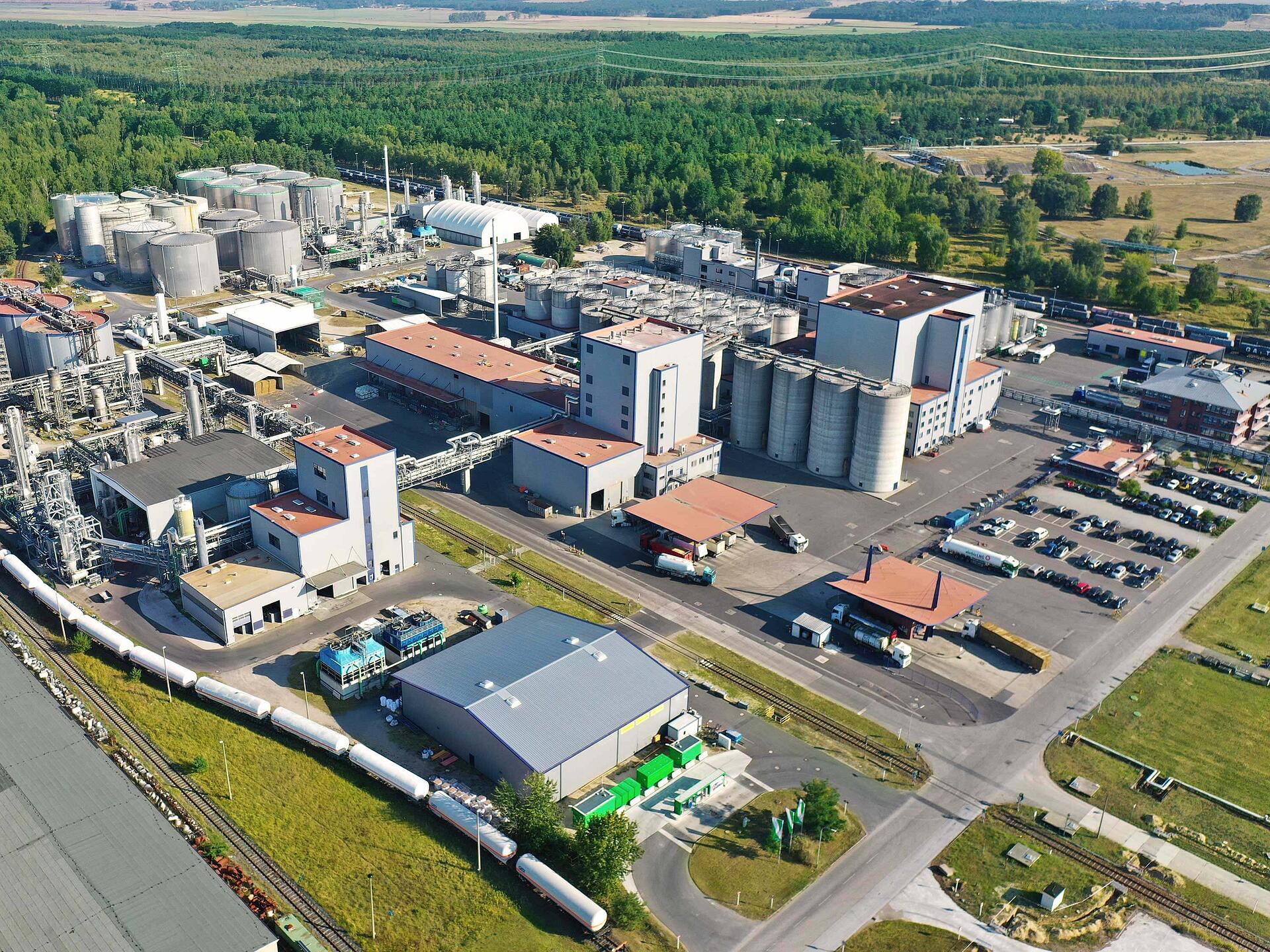
VERBIO Schwedt biomethane facility. Source of image: Verbio.
The plant was planned for extension to reach 16.5 MW capacity by the year 2019, generating 140 GWh of biomethane annually for sale as biofuel from approximately 40,000 tons of straw. For this purpose, EUR 25 million was invested. The working volume of the digesters is 8,000–10,000 m3. The feedstock is supplied by the local farmers in exchange for produced organic fertilizer (digestate), thus ensuring ‘payment’ for the straw. Straw is pre-treated mechanically and thermally. Biomethane is pumped into the local gas grid.
The straw bales used to feed the plant is gathered within a radius of 80 km of the plant to ensure maximum economic and ecological efficiency. In exchange, the fermentation waste is provided to farmers as organic fertilizer. This local production chain is creating employment in the region’s agricultural sector and ensure maximum CO2 efficiency.
VERBIO Nevada Biorefinery biomethane plant, USA
Verbio has been producing renewable natural gas (RNG or biomethane) from corn stover on an industrial scale since December 2021 in Nevada City, Iowa. The project includes a two-phased construction campaign with commissioning the first phase in 2021 and the second in 2022. Total investments amount to $35 million (1st stage) and $80 million (2nd stage). The full annual biomethane production capacity is estimated to be 680 GWh.
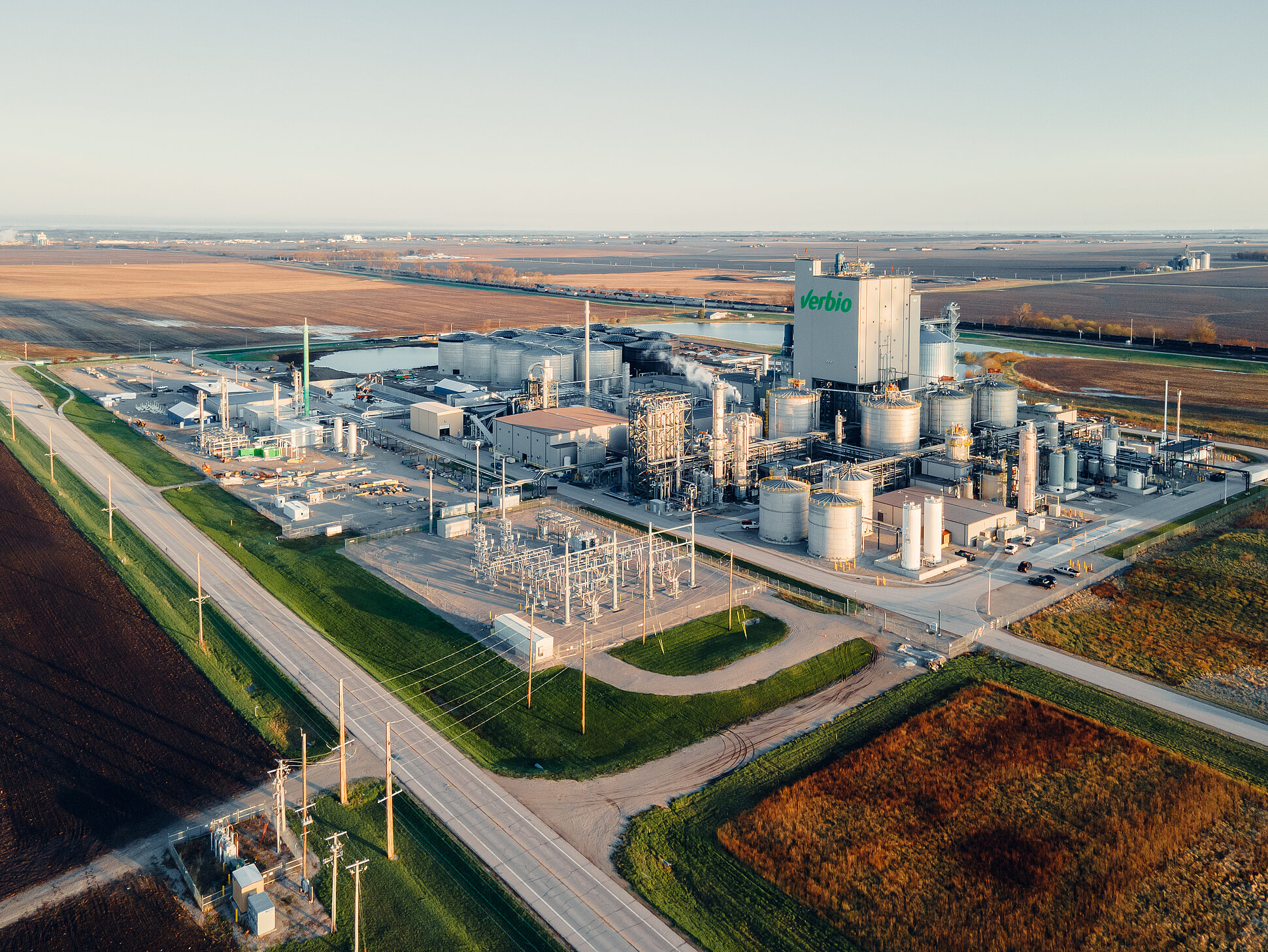
VERBIO Nevada Biorefinery biomethane plant. Source of image: Verbio.
The plant consists from 16 fermenters in total, each with a capacity of 10,600 m3. Main feedstock is baled corn stover in amount of 75,000-100,000 t/a. Pretreatment includes grinding and thermal treatment by hot water. Water is used at elevated temperatures (160-240 °C) and high pressures. The plant grinds square bales of corn stover purchased from local farmers. Once the bales are put into storage and checked for moisture percentage, the stover is then loaded onto one of two conveyer belt lines and sent through the hammer mill to break up larger pieces, filter those through a screen, add water to it, mix it up and send it to the digesters.
The Nevada plant is built on 55 acres of land and employs a workforce numbering approximately 100 persons. Due to major risks associated with availability of the feedstock for anaerobic digestion, VERBIO Agriculture (VA), LLC (formerly VERBIO Farm Services, LLC) was formed. Its primary responsibilities are to secure feedstock of baled crop residue that is procured within 80 – 120 km radius.
The largest commercial straw biomethane plant ever built, China
The plant was constructed in Harbin in 2022. It utilizes 58,000 t/a of corn stover and 58,000 t/a of rice straw102, 103. Sitting on approximately 13 hectares of land, in which half of the space is feedstock storage, it is the world largest biogas plant so far that uses only corn and rice straw as waste input. The installed power capacity of the plant is 30 MW.
- Harbin straw biomethane plant. Source of image: Wabio.
- Harbin straw biomethane plant. Source of image: Wabio.
According to the WABIO, the technology provider, one can expect a productivity rate of up to 600 Nm3 of biogas per tonne of corn straw on a 65% methane rate. The produced biomethane is further processed to produce bio-CNG. According to the open-source information, total project investments amount to €43 million.
Biogas plant in Kværs, Denmark
A new biogas plant in Kværs, Denmark, is a large-scale facility constructed by Nature Energy and is expected to produce RNG (biomethane). Construction began in 2020 and was completed, with the plant starting production in 2022. The plant can handle 800,000 tonnes of biomass annually and is expected to produce over 20 million m3 of RNG, displacing natural gas from the Danish energy system.
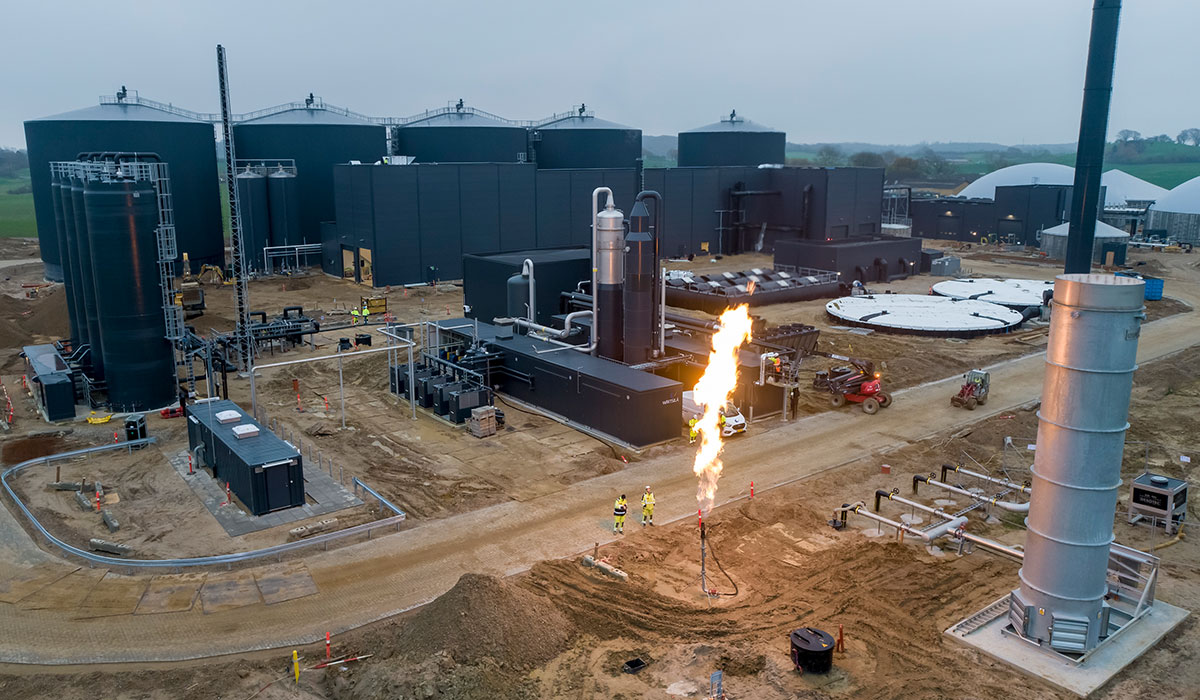
Biogas plant in Kværs. Source of image: DRIAS.
This project uses Linka Energy and EUROmilling’s complete straw handling system. The system includes a thermal and mechanical straw pretreatment plant that breaks down the straw, which is then utilized in the next stage of the biogas plant. The straw is shredded by drums that both cut and separate the straw fibers before they fall into the collection bin. The drums operate at low speed, which reduces energy consumption and lowers the risk of sparking. Next system consists of an EUROmilling grinding setup that handles the shredded straw and includes a pre-mill, a hammer mill, and a pre-mixer.
Read the full text of Analytical Note No. 2 on the UABIO website
The analytical note was prepared within the framework of the project “Ukrainian Biomethane Sector Development”, funded by the Energy Community with the support of the UK Agency for International Development (FCDO) and implemented by the Public Union “Bioenergy Association of Ukraine” (UABIO). We would like to thank the experts at UABIO for preparing this document!
